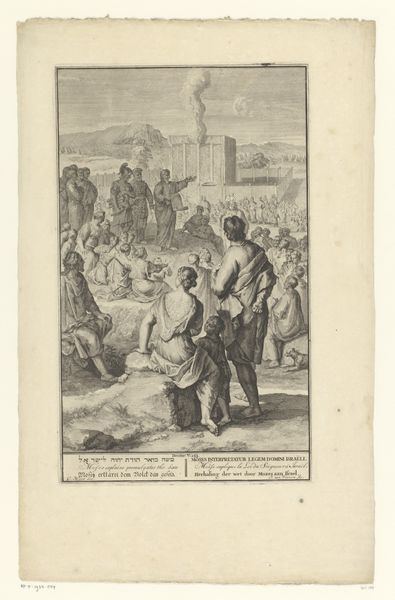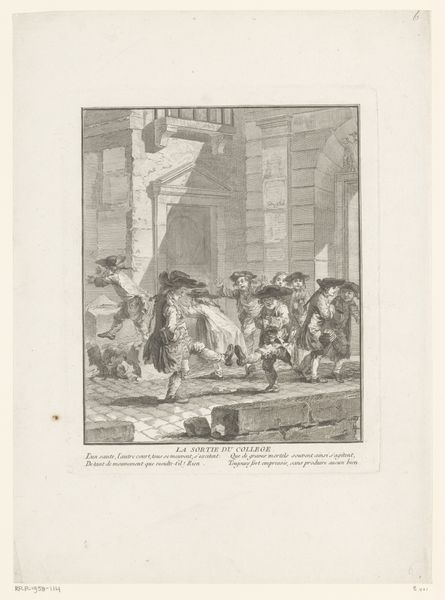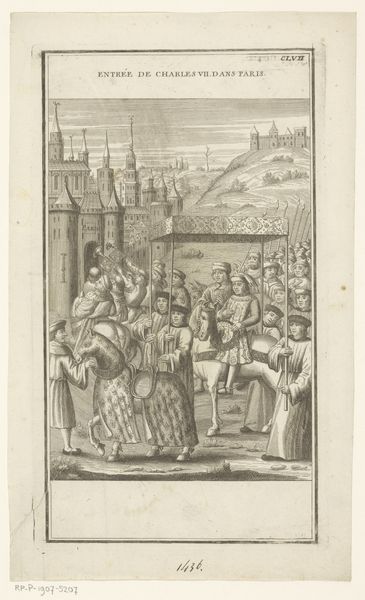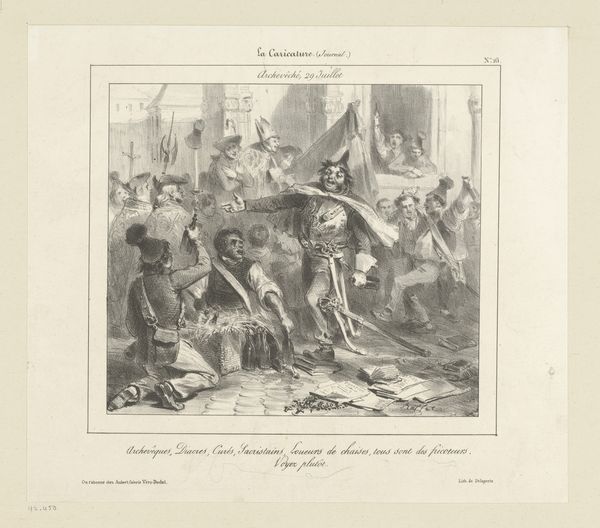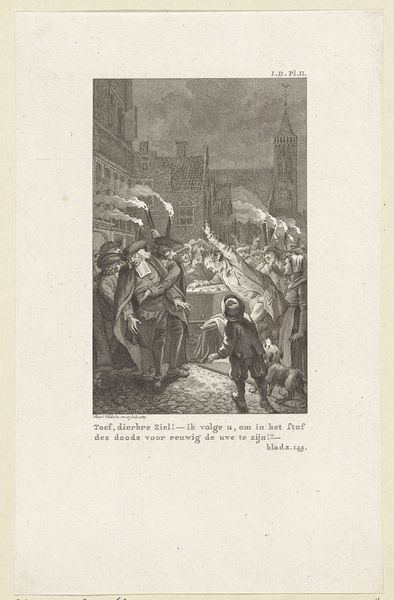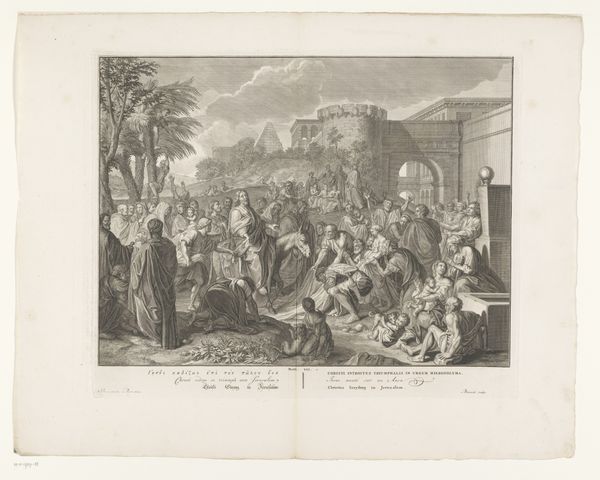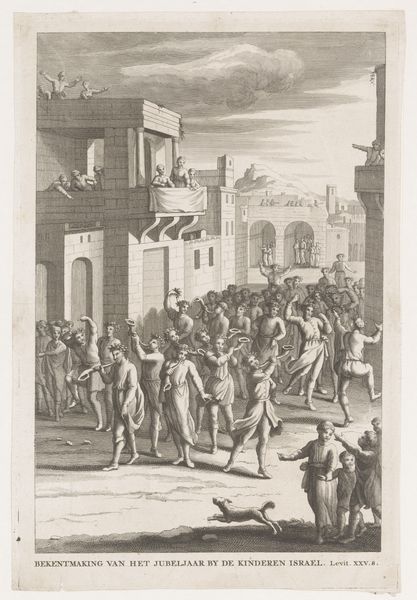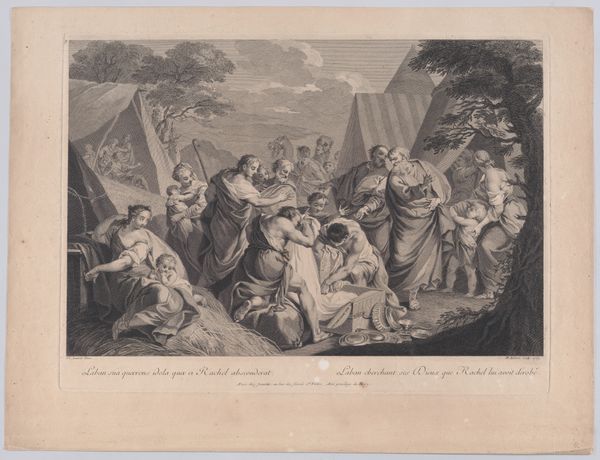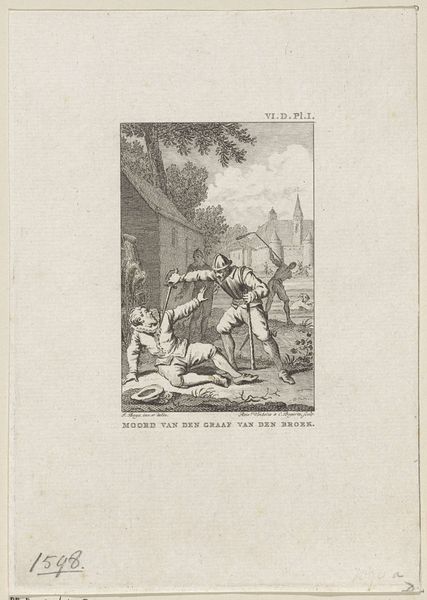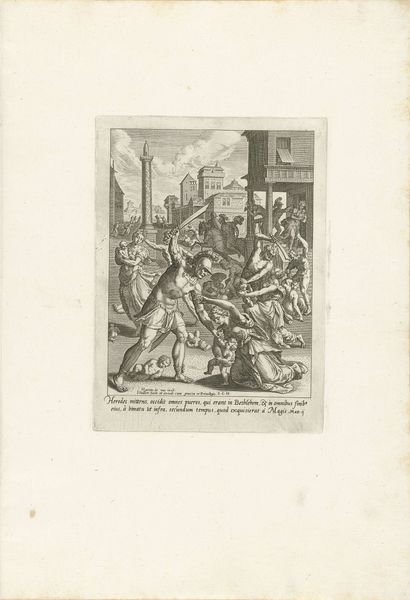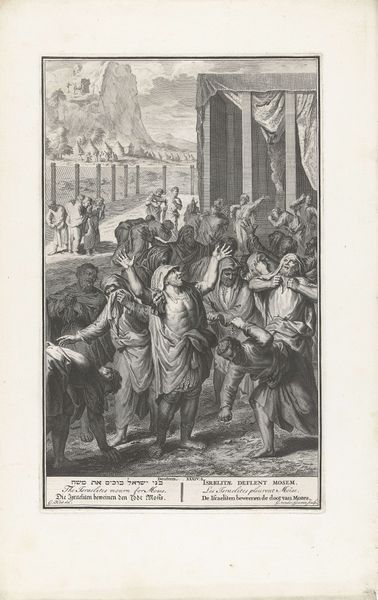
print, engraving
#
narrative-art
#
baroque
# print
#
old engraving style
#
personal sketchbook
#
cityscape
#
history-painting
#
engraving
Dimensions: height 355 mm, width 222 mm
Copyright: Rijks Museum: Open Domain
Curator: The scene that confronts us in this gallery is "Rouw der Israëlieten te Gibea," or "Mourning of the Israelites at Gibeah," an engraving by Quiryn Fonbonne. It's thought to have been created sometime between 1690 and 1757. Editor: It's intense. The scene pulses with raw emotion, almost theatrical. The high contrast in the engraving throws the figures into sharp relief against what I assume is Gibeah's backdrop. The people in the foreground seem swallowed by their despair. Curator: That despair reflects the story depicted here, originating from the Book of Judges. Fonbonne captures the aftermath of a brutal civil conflict. It was a moment where communal sorrow became a powerful societal force. The level of detail and precision in rendering the city’s architectural forms in the background grounds us within the context. Editor: What strikes me is how this image serves almost as a tableau vivant. The city in the background serves almost like a distant spectator, seemingly detached from this profound human drama unfolding. You’ve got figures clinging to one another in clear states of grief and frenzy; the artist powerfully explores trauma here and connects it to the wider social framework. Curator: Yes, and engravings at this time held a key role. They circulated narratives, not just visually, but also conceptually. Prints democratized visual information, making these biblical stories available beyond ecclesiastical and elite circles. Editor: Indeed, they were incredibly influential. It’s difficult to dismiss the fact that, whether intentionally or not, Fonbonne created something that echoes across centuries, prompting discussions around gendered violence and communal grief. It prompts the question: Whose stories get memorialized, and how? Curator: Certainly, a study of this period highlights how art shaped public opinion, reinforcing cultural memory but also how contemporary audiences actively viewed and adapted that content. These prints give us access to these important cultural interactions and socio-political dialogues. Editor: Ultimately, artworks like this can ignite essential dialogues. They act as potent mirrors to confront the complexities of our past, inviting a deeper exploration of our values and their relationship to cultural memory. Curator: Well said. Thank you for helping us consider this image anew.
Comments
No comments
Be the first to comment and join the conversation on the ultimate creative platform.
